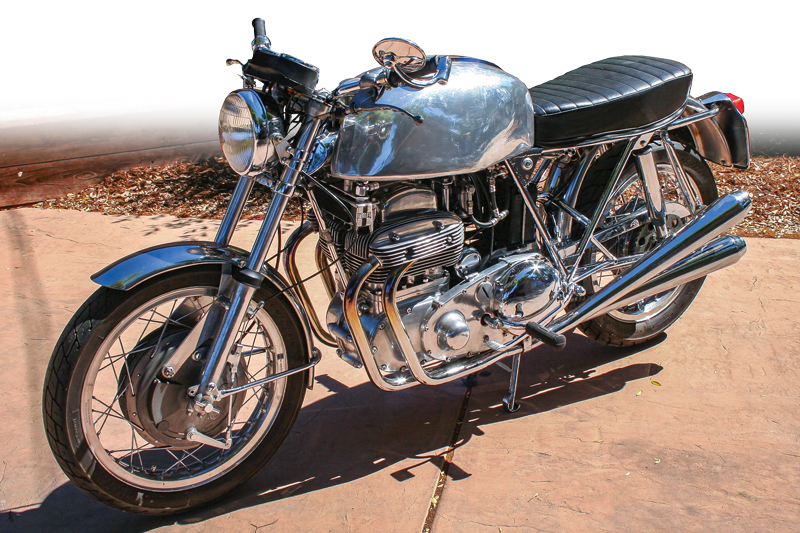
This has to be one of the least-known motorcycles built since the end of World War II, with an Ariel 4G Mark II Square Four engine bolted into a Roger Slater frame. The photo model is one of the two prototypes, and lacks some of the amenities of the production versions – such as the side panels.
The Healey 1000/4 does not appear to be listed in any of the popular motorcycle encyclopedias, and the only major mention to be found in motorcycle histories are some three pages in Roy Bacon’s “Ariel – The Postwar Models.” I remember reading something about it in an American motorcycle magazine in the early 1970s, but that is about it. After punching a few keys on my computer a dozen different sites come up, with varied information. Any number of articles have probably been written about this bike in British magazines, but apparently those stories are not online.
Starting at the beginning means back to the first 997cc OHV Ariel 4G engine. An earlier, smaller, OHC version existed, but we’ll leave that out. That 4G was around from 1936 to 1959, with Ariel advertising Squariels that last year, along with the new two-strokes.
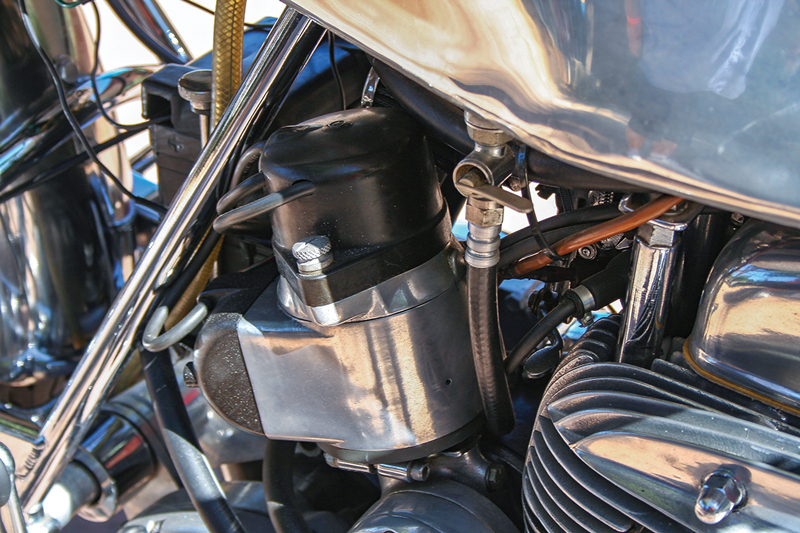
The biggest problem with an air-cooled square four is that the front cylinders do fine, but the rear pair can overheat. Over the quarter-century of the 4G’s production – minus a couple of years due to the war – there were continuous upgrades in the run that totaled some 12,000 bikes. The final Mark II version had an alloy cylinder block with pressed-in barrels, and a lightweight alloy cylinder head with a slightly X-shaped induction manifold feeding all four cylinders via just one SU carburetor. A single transverse camshaft operated the eight valves. Two separate cast aluminum exhaust manifolds ran four separate header pipes, better for cooling. The dry sump engine had eight pints of oil in the reservoir. The oil-bathed primary chain ran back to a dry clutch, and the four-speed gearbox was a Burman GB.
The original purpose of this model was to haul sidecars, so it did not have much in the way of horsepower – around 40 with the 7.2:1 compression – but bags of torque. Sprinting, the British word for drag racing, was popular in the 1950s, and a stock Mark II, being rather hefty, ran in the mid-15s with a speed of around 85 mph. One fellow put a supercharger on a Vincent V-twin and turned 11.3 seconds in 1958, but when somebody tried that with a 4G, it ended with a big BANG! as the cylinders separated from the crankcase.
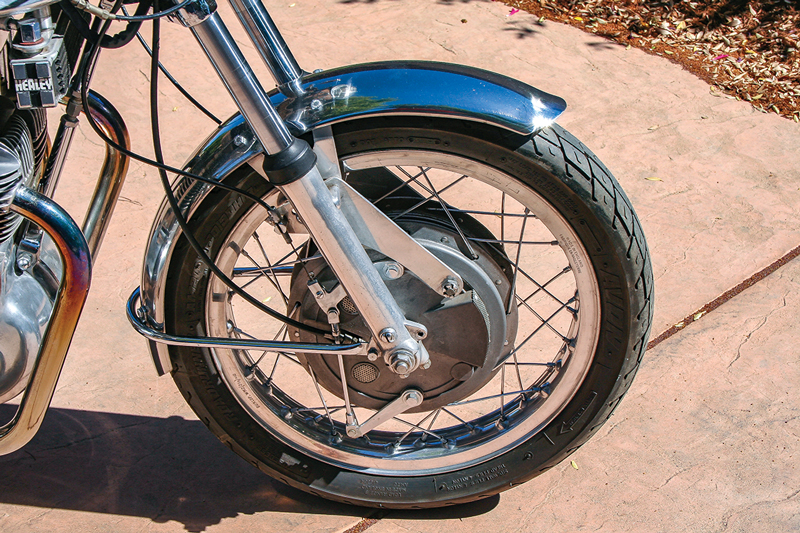
A pair of brothers, George and Tim Healey, liked playing around with the 4Gs, and were sprinting them in the 1960s. Some time after Ariel shut down 4G production, the Healeys began gathering up the unsold stock. They had a shop in Redditch, a few miles south of the Ariel factory, and by 1967 the spares were running out and building replacement parts had become their full-time business, called the Ariel Sq4 Specialists. Then they decided to build their own motorcycle.
The old Square Four had a rather basic, and heavy, cradle frame, with an Ariel fork and Anstey-link plunger suspension at the back. The boys got in touch with Slater, who was making tubular spine-type frames for Vincents under an agreement with Fritz Egli (read about the Egli-Vincent here). Could he make a similar design for the Square Four? Not a problem. Essentially the engine was suspended from the frame, using half a dozen through-bolts. Up front a turnbuckle went from the steering head to the crankcase – just in case there might be a similar BANG!, this would prevent the crankcase from falling to the road. Slater built the prototypes, and production versions were manufactured in Redditch. The oil supply was held in the backbone, with the Healeys putting in an improved lubrication system and bolting an oil cooler on up front.
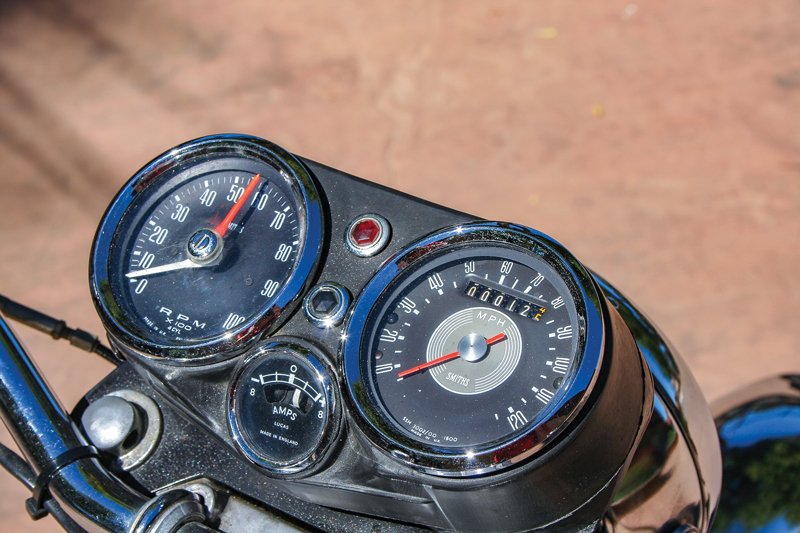
Metal Profile, a noted company that supplied forks to many British motorcycle companies, made the front fork, with tapered roller bearings used at the head. Rear shocks were by Girling, with two-way damping. Brakes were Italian, a powerful alloy drum having a pair of two leading shoes to slow the front wheel, single leading shoe at the back. Spoked wheels were both 18-inchers, with a 3.25 tire on the front, a 4.00 on the rear. The large gas tank on this prototype was a Slater design, but when the bike went into production, a more refined style was used. Instruments were speedo, tach, ammeter, sitting above a seven-inch headlight; a little clock was added to the production dash.
End result was somewhat impressive. Better cooling and lubrication allowed the compression ratio to be upped to 7.5:1. The Healey advertising said the 1000/4 put out 50 horsepower, 10 more than the old Mark II. Potential self-destruction kept radical changes at bay. Wheelbase was 57 inches, seat height 30 inches, and ground clearance at the unprotected sump was 7.5 inches. Most impressive was the weight, 355 pounds dry, 80 pounds less than the Mark II.
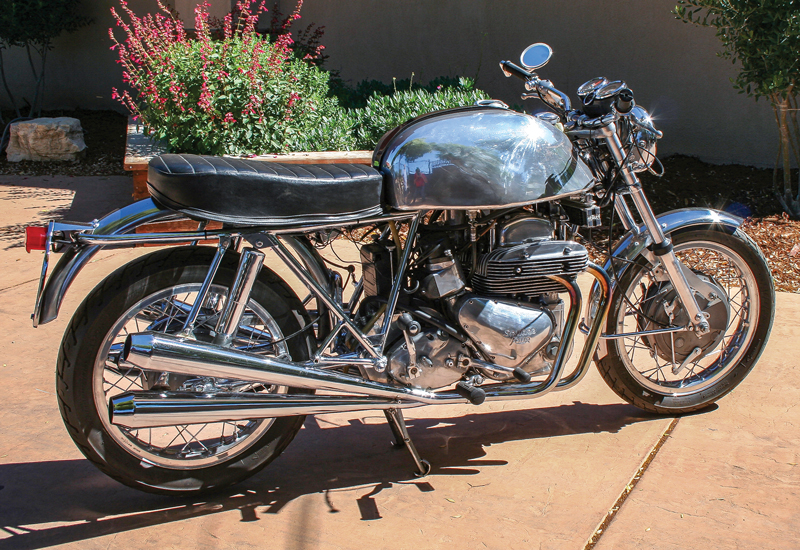
The first showing of a production bike was at Britain’s big motorcycle show in late 1971, and improvements went on over the next six years, ending with disc brakes and mag wheels, Italian fork and shocks. But the price was high, more than the new-in-1975 Gold Wing, and the company shut down in 1977. Precisely how many production models were built and sold is not known, but 18 seems to be a fair number. Plus nine or 10 kits for people who already had the 4G engine. Collectability? A Healey sold at auction for $40,000 in 2016.








I owned a Mk1 Square four and visited the Redditch works when collecting a large quantity of parts for my rebuild which was to concourse condition. I rode it for a number of years.
They let me take the Healey 100/4 out around the works roads, it was a fabulous ride.